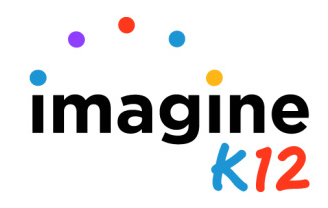This is one of my responses to the call by the Gates Foundation for Next Generation Learning. The question was “WHICH INTERACTIVE TECHNOLOGIES HAVE THE POTENTIAL TO BE MOST WIDELY ADOPTED AND WHY?”
To answer the question specifically: technologies that show the potential to be most widely adopted will have a combination of network effects, a sticky user experience, and a low-resistance path-to-market that focuses on users and circumvents institutional decision making.
Student-centered web services like Chegg, CourseHero, Cramster, Notehall, Zinch, Unigo, GulliverGo, ULoop, and others have the chance to get the widest distribution.
We can also assume that any innovative product will have highly social elements that tap into network effects.
Monetization does not necessarily follow distribution, (though Chegg is killing it). The easiest way to monetize is to sell a product to the user or get in the lead gen game (like myedu.com did), but it’s also the easiest way to lose focus on bringing innovation to education. In order to fully monetize the user base the service will need to offer products to the institution, using the extensive student distribution as a lever. Zinch has this model, though it also plays the lead gen game. The most high-profile company to pull this path-to-market off in the commercial world is Yammer.
When it comes to the thesis of Next Generation Learning, NextGen seems to skip the fact that consumer-focused products with sticky and simple user experiences will win big and be able to translate that into a new learning platform. In particular, Watermelon Express has executed well on their product development. Grockit is also making a bold play with a similar test-prep like point of entry, but with a clear platform for a “DIY” Adaptive Learning Environment with gaming mechanics.
When it comes to course management products, either a disruptive model will have to back it’s way in or the new new thing will have to have an open-source distribution model with a value-added services business supporting it. There’s simply not a real economy around EduPunks for the forseeable future, institutional adoption processes are slow and painful enough to kill any start up, and Blackboard is out to push out or scoop up anybody that gets traction. In particular, I have hopes that someone will hone in on an opportunity around real-time classroom participation through the form of backchannelling here. Drew Harry at MIT has open sourced his backchan.nl. HotSeat came out of Purdue but I’m not sure how they plan to spin it off. The good part about education is that there are lots of people willing to collaborate all across the world.
To answer the question specifically: technologies that show the potential to be most widely adopted will have a combination of network effects, a sticky user experience, and a low-resistance path-to-market that focuses on users and circumvents institutional decision making.
Student-centered web services like Chegg, CourseHero, Cramster, Notehall, Zinch, Unigo, GulliverGo, ULoop, and others have the chance to get the widest distribution.
We can also assume that any innovative product will have highly social elements that tap into network effects.
Monetization does not necessarily follow distribution, (though Chegg is killing it). The easiest way to monetize is to sell a product to the user or get in the lead gen game (like myedu.com did), but it’s also the easiest way to lose focus on bringing innovation to education. In order to fully monetize the user base the service will need to offer products to the institution, using the extensive student distribution as a lever. Zinch has this model, though it also plays the lead gen game. The most high-profile company to pull this path-to-market off in the commercial world is Yammer.
When it comes to the thesis of Next Generation Learning, NextGen seems to skip the fact that consumer-focused products with sticky and simple user experiences will win big and be able to translate that into a new learning platform. In particular, Watermelon Express has executed well on their product development. Grockit is also making a bold play with a similar test-prep like point of entry, but with a clear platform for a “DIY” Adaptive Learning Environment with gaming mechanics.
When it comes to course management products, either a disruptive model will have to back it’s way in or the new new thing will have to have an open-source distribution model with a value-added services business supporting it. There’s simply not a real economy around EduPunks for the forseeable future, institutional adoption processes are slow and painful enough to kill any start up, and Blackboard is out to push out or scoop up anybody that gets traction. In particular, I have hopes that someone will hone in on an opportunity around real-time classroom participation through the form of backchannelling here. Drew Harry at MIT has open sourced his backchan.nl. HotSeat came out of Purdue but I’m not sure how they plan to spin it off. The good part about education is that there are lots of people willing to collaborate all across the world.

